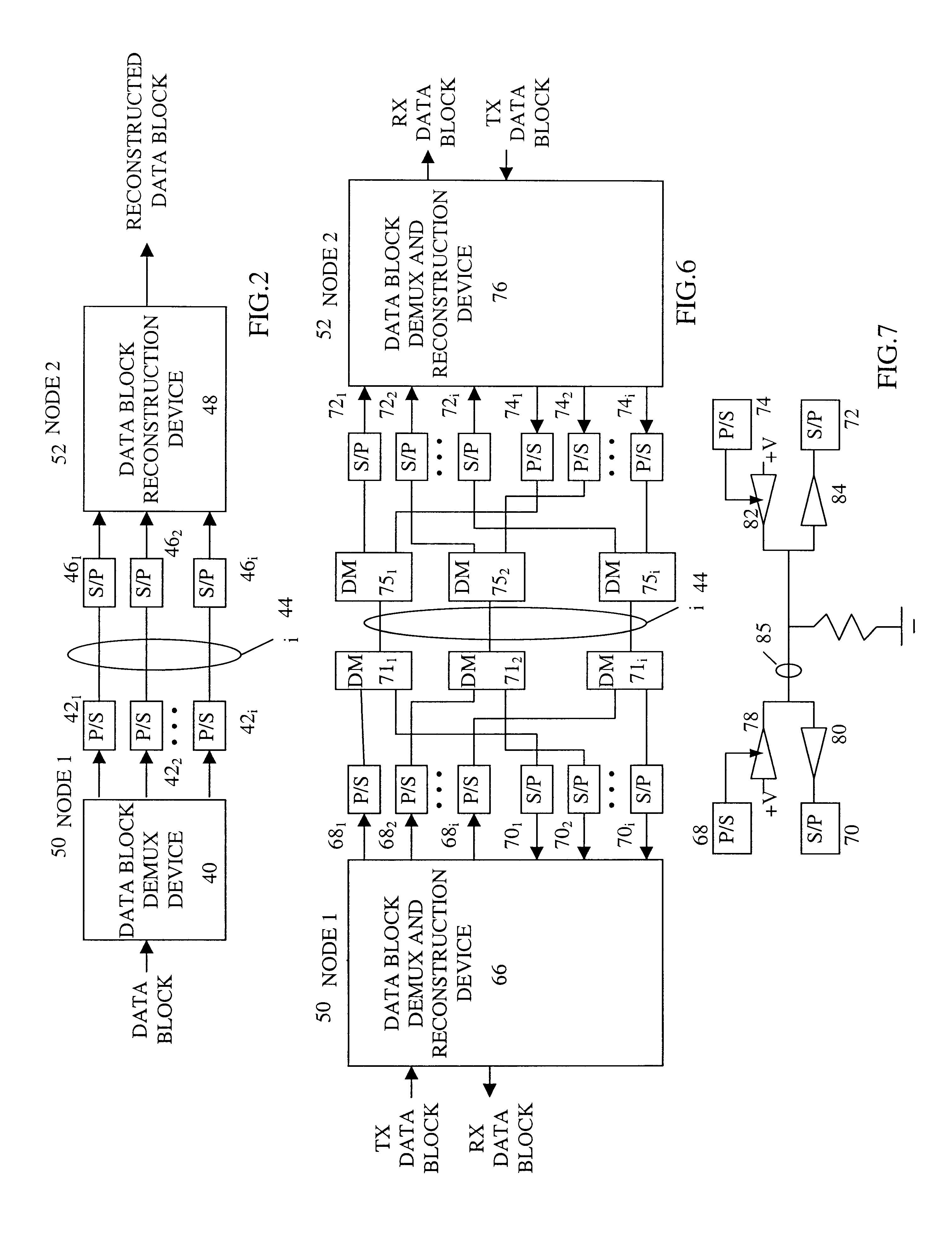Method employed by a base station for transferring data
a data transfer and base station technology, applied in the field of bus data transfer, can solve the problem of increasing the cost of a bus depending on the implementation
- Summary
- Abstract
- Description
- Claims
- Application Information
AI Technical Summary
Problems solved by technology
Method used
Image
Examples
Embodiment Construction
FIG. 2 is a block diagram of a hybrid parallel / serial bus interface and FIG. 3 is a flow chart of hybrid parallel / serial bus interface data transfer. A data block is to be transferred across the interface i 44 from node 150 to node 252. A data block demultiplexing device 40 receives the block and demultiplexes it into i nibbles for transfer over i data transfer lines 44, (56). The value for i is based on a tradeoff between number of connections and transfer speed. One approach to determine i is to first determine a maximum latency permitted to transfer the data block. Based on the allowed maximum latency, a minimum number of lines required to transfer the block is determined. Using the minimum number of lines, the lines used to transfer the data is selected to be at least the minimum. The lines 44 may be the pins and their associated connections on a circuit board or connections on an IC. One approach to demultiplex into nibbles divides the block into a most significant to a least s...
PUM
 Login to View More
Login to View More Abstract
Description
Claims
Application Information
 Login to View More
Login to View More - R&D
- Intellectual Property
- Life Sciences
- Materials
- Tech Scout
- Unparalleled Data Quality
- Higher Quality Content
- 60% Fewer Hallucinations
Browse by: Latest US Patents, China's latest patents, Technical Efficacy Thesaurus, Application Domain, Technology Topic, Popular Technical Reports.
© 2025 PatSnap. All rights reserved.Legal|Privacy policy|Modern Slavery Act Transparency Statement|Sitemap|About US| Contact US: help@patsnap.com



